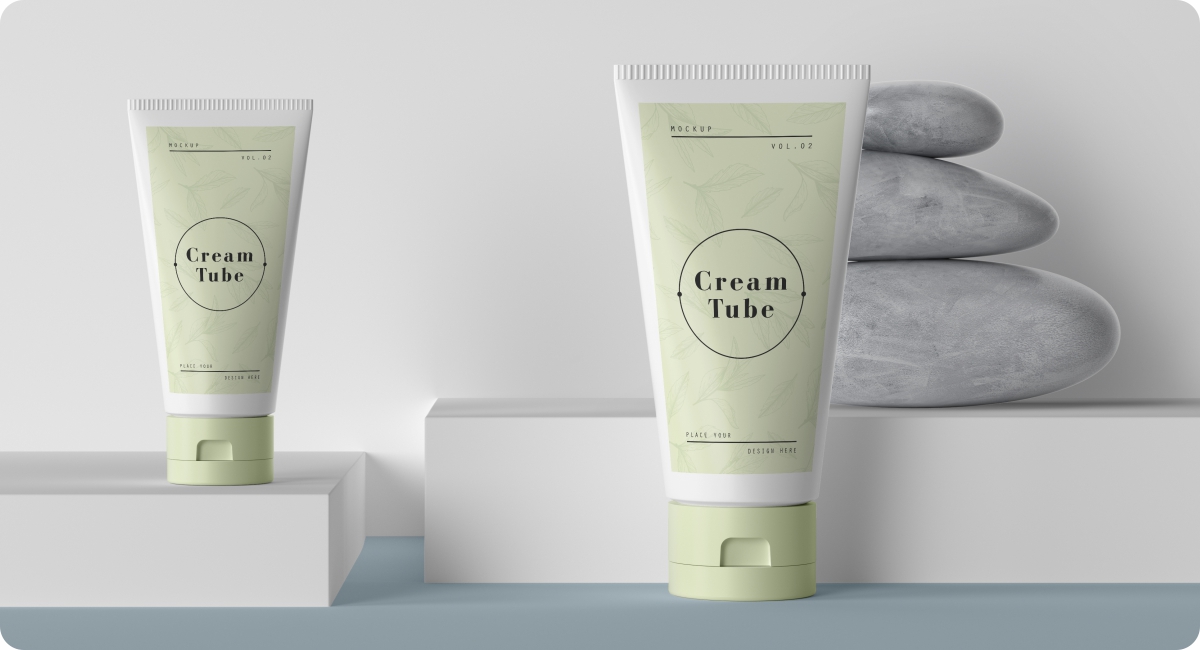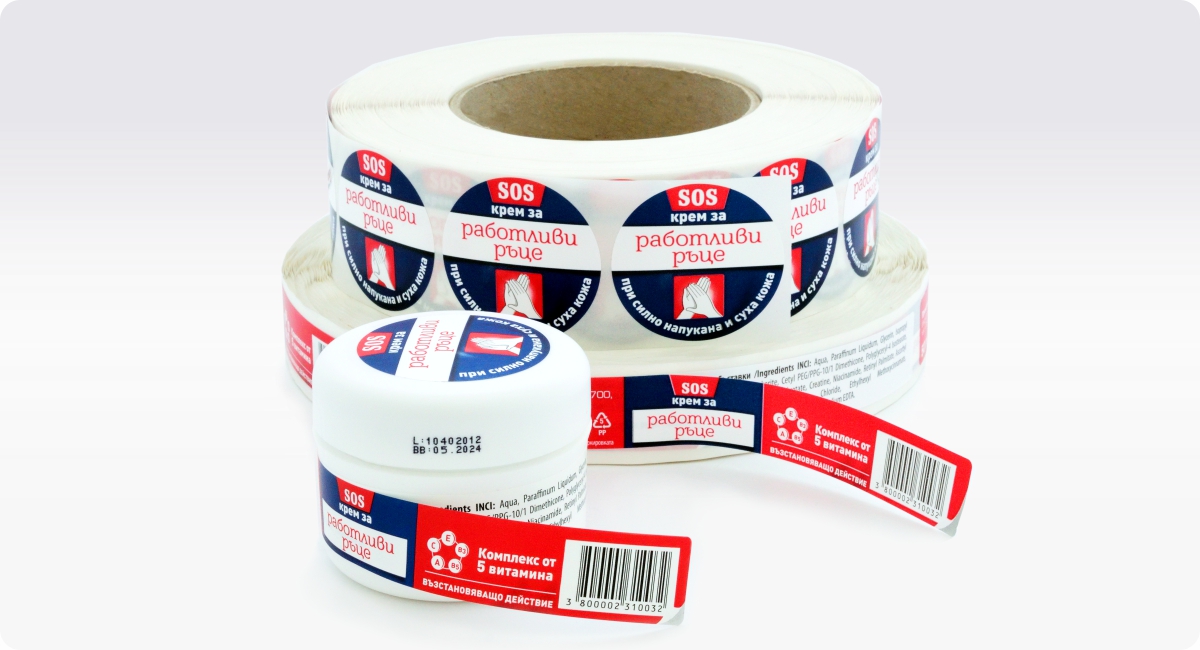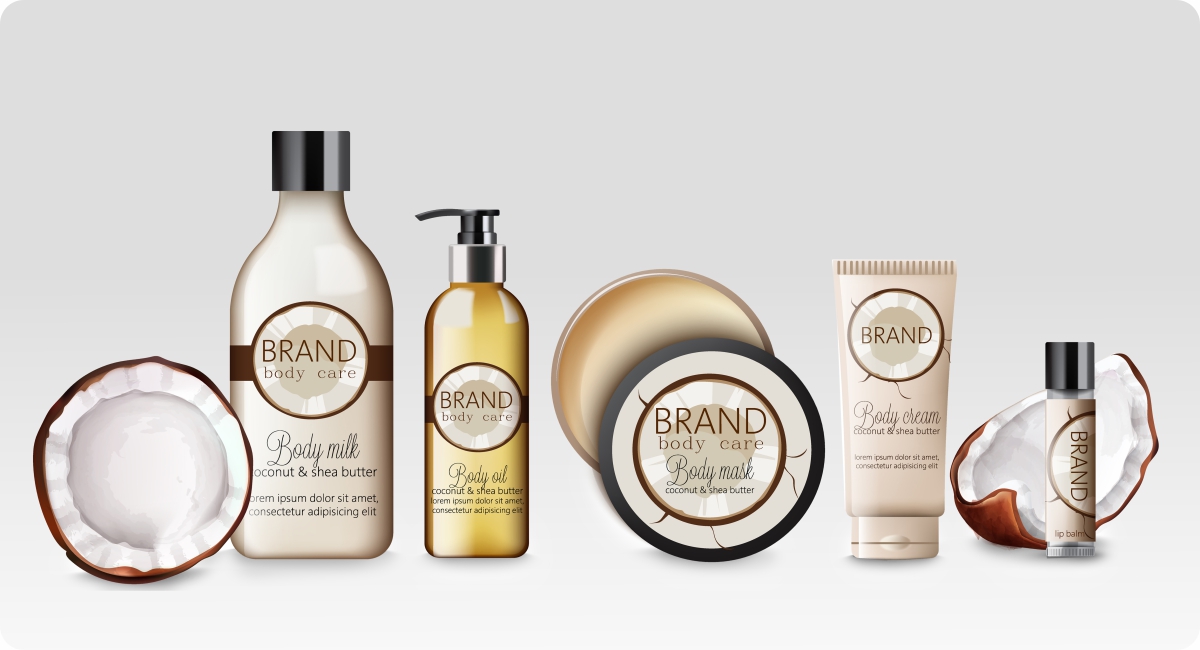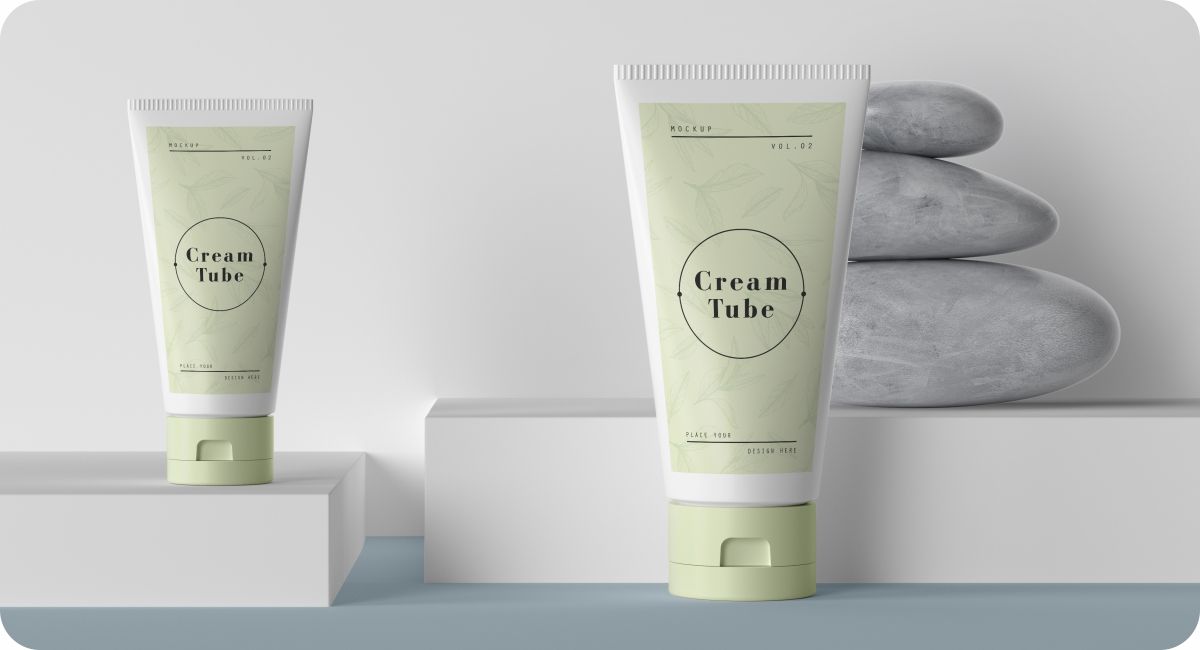Date: 09 Aug 2021

Cosmetic labels carry extremely important information about the products they are applied to. With an attractive design, suitable materials and label printing technology, they can also be a key element of product marketing. In order to perform those functions, cosmetic labels must meet many different labeling requirements and standards. In this blog article you can learn the main parameters that you need to consider when ordering cosmetic labels.
There are strict regulations for the labeling of cosmetic products, specifically created by the European Union. Before printing your labels, you should familiarize yourself with these rules.
Cosmetic labels have to contain the following information:
- Product purpose: customers need to be aware of what the product should be used for;
- Weight: this is the actual weight of the product when it is finished. You must not include the weight of its packaging;
- Ingredients: according to the regulation, all ingredients have to be visible on the labels in descending order – first the most used and lastly the least used ingredient;
- Warnings and directions for use: they have to be clearly marked on the product in order to avoid accidents caused by improper use;
- Contacts: name and address of the manufacturer, distributor or responsible person. You must also include the country of origin of the cosmetic product;
- Expiry date and shelf life after opening (e.g. 30 months);
- Batch number: in order to make it possible to trace individual ingredients to the final product.

If your cosmetic labels do not contain this data or includes misleading information, the incorrectly marked products may be subject to regulatory penalties.
Other information that we recommend you include are features that could set your product apart from the competition. Such characteristics are “Bio”, “Organic”, “Vegan”, “Hypoallergenic”, “Not tested on animals”. If this information is true for your product and not misleading, you can include this in your cosmetic labels and attract your target customers.
Including this important information onto cosmetic labels is often a challenge for manufacturers because cosmetic product packaging and therefore labels are usually small in size. Here the imprint has to be extremely high-quality so that the fine print is legible and the barcode (if there is one) easily scannable in retail stores.
In recent years, there has been a gradual increase in the amount of mandatory information that needs to be on the labels of beauty products. These regulatory requirements have led to a growing demand for three-sided labels and multilayer labels.

Multilayer labels are also known as three-layer, double-layer or double-sided adhesive labels, as well as peel and reseal labels. They usually contain two or three layers, the upper layers being adhesive labels placed on top of another adhesive label.
The bottom layer has a very strong adhesive, which attaches the entire label to the product. The top (and middle) layer of these labels has a special adhesive. It allows you to repeatedly peel it off, read the information on its back and re-glue it effortlessly.
They are suitable for products with both flat and curved surfaces. The flexibility of these multifunctional labels for repeated adhesion and peeling allows manufacturers to include a large amount of information on a small area. They also often find application when there is a need to print information in more than one language. For more information on multilayer cosmetic labels, follow this link.
Other than multilayer, there are a wide range of standard adhesive cosmetic labels. The possible materials for producing these labels are paper, polyethylene, polypropylene, PVC and others.
If they are properly made, high-quality self-sdhesive paper labels can be an ideal economical solution. They are suitable for small-sized products with a short shelf life that will not be used in humid environments. They are offered in various colors according to the cosmetic brand.
However, most cosmetic products are used in environments with a high degree of humidity. They are also often exposed to water, steam, alcohols, oils and other substances. Therefore, paper labels are not a suitable solution for most cosmetic products because these factors can harm the ink and the label itself.
In order to avoid that, a more suitable option is foil labels which are more durable and tear-resistant. The main types of foil labels which are suitable for cosmetic labels are polypropylene (PP) and polyethylene (PE). Due to the firmness of polyester labels, they are not suitable for products with uneven or curved surfaces. That is why they are not used in the cosmetics industry.
 Polyethylene labels are made of a white or transparent material suitable for flexo, letterpress, offset and thermal transfer printing. They are available with a matte or glossy finish. The PE material is flexible which guarantees good adhesion to products with a curved or uneven surface as well as flexible packaging. It is also highly resistant and durable and ensures that the label’s integrity will be maintained throughout the life cycle of the product.
Polyethylene labels are made of a white or transparent material suitable for flexo, letterpress, offset and thermal transfer printing. They are available with a matte or glossy finish. The PE material is flexible which guarantees good adhesion to products with a curved or uneven surface as well as flexible packaging. It is also highly resistant and durable and ensures that the label’s integrity will be maintained throughout the life cycle of the product.
Polypropylene labels are perhaps the most commonly used cosmetic labels. They ensure great adhesion and ink protection as well as add to the attractive appearance of the product. These plastic labels are available in the following types:
- Transparent polypropylene labels: these cosmetic labels are an ideal solution for products which are exposed to humidity daily. Other than for their water-resistant qualities, the transparent polypropylene labels are often used as they provide the desired “no-label” effect. They improve the appearance of the product and imprint.
- White polypropylene labels: they are also water-resistant but have a clear white color. These durable labels preserve the color and quality of the printed image and text even when they are exposed to harsh and humid conditions.
Another option for creating cosmetic stickers and labels with an attractive design is printing on labels with a gold or silver coating. This can contribute to the feeling that the labelled product is produced by a high-end cosmetic brand. It is also possible to add gold or silver foil on the printed label - adding an interesting detail to your product design.
If you are not convinced which is the most appropriate solution for your product labels, consult with the label manufacturer or designer you hired. They will offer you the best option according to the specific application and budget.
Be sure to take into consideration the environment in which the product and its label will be located, including during the logistics operations. This information will help you choose the right material and adhesive for your label as well as whether additional protection such as varnish or lamination is needed. The most commonly used material for laminating cosmetic labels is polyester. It can be applied with a matte ( achieving matte lamination) or glossy finish.
Varnishing is also a commonly used method, with both types of additional protection conserving the ink on the label from smearing or scratching. They also protect the label itself from heat and humidity.
Adhesive

In addition to the regulations on the content of the texts printed on cosmetic labels, there are rules concerned with their physical condition. They state that the label must be firmly adhered to the product throughout its entire life, including storage and logistics operations. If you printed a custom label with an interesting design that meets the EU requirements for mandatory information, it will only be useful if it remains attached to the product long enough.
In order to achieve that, the adhesive must be suitable for the conditions in which the cosmetic product will be used and transported. If the product will not be used in humid environments, a high-quality standard all-temperature adhesive will be sufficient.
However, as we already mentioned, most personal care products are often exposed to water, large amounts of humidity, oils, alcohols and others. Without a sufficiently durable adhesive, your product labels may peel off or their integrity might be compromised, making them illegible or unscannable. In addition to solvent resistance, in most cases, the adhesive must be resistant to tearing or cracking. This is very important, especially if your product is squeezed during use.
When choosing an adhesive, it is also important to take into consideration the materials from which the label and packaging are made. In order to create the impression that they are a high-quality brand, many manufacturers choose packaging that is soft to the touch. In these cases, a very strong permanent adhesive is needed to achieve good enough adhesion. Similarly, transparent labels made of transparent foil require an ultra-transparent permanent adhesive.
The choice of a high-quality adhesive, carefully coordinated with your specific requirements, will help you protect the integrity of your label. It will also help you comply with regulatory rules and preserve the aesthetic qualities of your labels.
Design and special effects of cosmetic labels
The appearance of a cosmetic product is the first thing that creates an impression on your potential clients.
There are many different materials, coatings and techniques that you can use in order to make your cosmetic packaging more original so as to attract customer attention. The use of decorative elements creates an impression of a high-end product. Using specific effects such as, for instance, cold or hot foil stamping give a more luxurious look to the packaging. Another example is a holographic imprint which offers protection against counterfeiting.
Special printing techniques also give the product a creative look, such as the embossing achieved through screen printing. This method makes your label look voluminous and attracts potential customers to touch and view the product. These techniques can help sell your products and turn your company’s name into a recognizable brand.
Cosmetic labels perform various functions. They help with doing inventory, contain important information and can increase protection against product counterfeit. But in order to increase sales and the popularity of your brand, you need to focus on the most important function of cosmetic labels – their ability to be a powerful tool for brand marketing.
Creating high-quality, durable and multifunctional cosmetic labels with a beautiful and interesting design is not always easy. That is why it is important that you trust specialists which can help you print high-quality labels quickly and efficiently.
Dilcom’s team is committed to providing clients with useful advice, excellent customer service and high-quality products in a short amount of time. We have a wide range of special materials and use contemporary production technologies so that we can offer you innovative, high-quality cosmetic roll labels. They will highlight the value of your products and distinguish your brand from the competition.


Post comment